BY TRAIN:
State-owned railroad operator Litrail has services to major cities in Lithuania. Most of the trains also stop at smaller stations along the way. Part of those smaller stations is inaccessible by any other mean of public transportation. Fares are low compared to Western Europe: Vilnius-Kaunas around €5 – 104 km, Vilnius – Klaipėda around €15 – 376 km (as of Feb 2016). In major railway stations tickets are bought at the ticket office inside the station building until around 5 minutes before the departure. A ticket is valid only on the exact train for which it was sold. However it is possible to buy tickets in advance. When buying tickets for round trip 15% discount is applied for return ticket. Many smaller stops have no ticket offices and tickets are bought from the conductor on board the train. In case you board the train in a station with a working ticket office and want to buy a ticket from the conductor you should pay a small extra fee. However this might be the only option if one arrives too late to the station but manages to catch the train. Only cash is accepted on board the train, however most if not all ticket offices accept cash as well as payment cards. The same rules for discounts apply as for other public transport in addition to occasional promotional discounts. In particular, there is a 50% discount for students with a Lithuanian Student ID or ISIC. Tickets are validated by train conductors and must be kept until the end of journey due to sporadic checks by conductors-inspectors.
Depending on the route trains may be faster or slower option than buses or minibuses. Examples of intercity routes where it is faster to go by train is Vilnius-Klaipėda and Vilnius-Kaunas. There are no high-speed railway lines in Lithuania. Where routes overlap trains usually run less frequently than road transport. However train sometimes is the only option to reach remote destinations far from major roads and towns (especially on routes Vilnius-Marcinkonys and Vilnius-Turmantas). This make trains popular among wilderness travellers and citizens looking for wild berries or mushrooms.
In general trains are more spacious than buses making them suitable for travellers with large bags or oversized items (such as skis, bikes). It is possible to transport bicycles on board of all the trains however special bike-ticket is needed (fee depends on the distance). Most trains have special racks for bicycles located in the first or last car. However these can accommodate only 2-3 bikes and it is not uncommon to simply line the bicycles along the aisle. Such practice is acceptable provided that the bicycles do not restrict movement of people. Most regional trains have a configuration of 3-3 chairs next to 2-2 chairs across the isle. This means that up to 10 people can see each other simultaneously and makes trains popular among larger companies. In some trains 3 chairs form one comfortable bench which is long and wide enough to be used as a bed – provided there is enough place for other passengers. Many of the long distance trains have compartments which can accommodate six seated passengers or four sleeping passengers. The headrest can be lifted up to form a very comfortable bunk bed, which can be used while people are seated below. The seats themselves form the other pair of beds. As some journeys are quite long (4½-5 hours in the case of Vilnius-Klaipeda), it is common to see people sleeping on the upper bunks during daytime journeys as well.
Historical Aukštaitija Narrow Gauge Railway in Anykščiai offers short trips to a nearby lake. In summer it runs on regular schedule, rest of the time tours must be booked in advance.
BY BUS:
In Lithuania it is easy to move by bus and practically all the bigger and most smaller places can be reached by bus. There are two types of intercity buses: express and regional. Express buses stop only at major towns and usually are much faster than regional. Express buses also tend to be much newer and comfortable. Sometimes (but not always) those buses are explicitly labeled as Ekspresas (“express”). It is the best option for longer distance travels between cities. In contrast, regional buses stop at every stop along the way. Thus they usually are slow, for example a 40 km trip can last an hour. Regional buses mainly are old cars that have been imported from the Nordic countries. Service quality in those buses might be lower compared to Western standards. Regional buses are best if you need to reach stations circumvented by express buses. However it is not uncommon for express and regional buses to service the same route thus it is better to ask in advance. Some buses are indirect, i.e. they go via towns out of the direct way between two cities. These are usually labeled as “CityA – CityB per CityC” (per meaning “via”).
Buses operate regularly between the main centres and the regional centres. There is usually a bus company in every town. Some of the biggest and best are TOKS (from Vilnius), Kautra (from Kaunas), Klaipėdos autobusų parkas (from Klaipėda), Busturas from Šiauliai and mini bus company, Transrevis. For students with Lithuanian Student ID, bus companies grant 50% discount around the year. By law for students with ISIC (International Student Identity Card) issued in European Union countries, bus companies should also grant 50% discount. Remember to keep your ticket till the end of journey in case inspectors decide to check the bus in one of the stations.
The bulk of Lithuania’s bus routes and turns has been listed in an address autobusubilietai.lt from which you also can reserve the tickets for certain routes. However, pay attention to the fact that the payment system supports only some of the Lithuanian banks, and your credit card at may not work. Another on-line bus ticket service is iticket.lt which has more payment options.
For buses and trolley-buses on routes within towns and cities it is recommended to buy the ticket in advance from a kiosk, board the vehicle using the middle door and stamp the ticket using one of the ticket punches. These used to be near the middle door, but with the introduction of electronic ticketing, there is often a single ticket punch behind the driver’s seat. Tickets bought from the driver, rather than kiosks, are more expensive and may also generate an off-handed response if the bus is late or crowded and you don’t provide the exact change. Students with Lithuanian Student ID or ISIC (International Student Identity Card) issued in European Union countries are eligible to 50% discount for single tickets and 80% discount for monthly tickets. Inspectors periodically check tickets and will issue a fine if you cannot produce a validated ticket or document proving eligibility to discount. The bus is exited by the middle door and it is important to head for the door before the bus has stopped – it can be impossible to leave once people have started boarding.
In addition to common buses, there are minibuses which usually operate express routes.
BY CAR:
As with the rest of mainland Europe, Lithuanian traffic travels on the right, and all distances are posted in kilometres.
The road network in Lithuania is fairly good, especially the motorways. The quality of road surface on minor roads can vary. The improvement work hampers traffic in many places. The Via Baltica road goes through Lithuania from Estonia to Poland. Another important road is the A1 from Vilnius to Klaipeda.
Turning right at a red traffic light is allowed where indicated by a green arrow (square white sign next to the red light, containing a green arrow indicating the permitted direction), provided that it does not endanger other traffic. The absence of such a sign means that turning right on red is not allowed, and the police will stop any driver seen breaking this rule.
Many bigger junctions have a separate green light for traffic turning left, but only one red/yellow light. The green light for the other directions shows arrows going straight and to the right, but these are easily overlooked. Thanks to the white reflective frame around most of these traffic lights, they are most easily identified by their outline.
On two- or three- lane roads, it is polite to move out of the right-hand lane (if safe to do so) when you intend to travel straight ahead; this keeps the right-hand lane clear for right-turning traffic. When moving back to the right hand lane watch out for fast-moving vehicles approaching from behind.
If the right-hand lane is marked with ‘A’ it is a dedicated bus lane. A lane marked ‘A / TAKSI’ can also be used by taxis. Other road users may only enter the lane in order to turn right into a side road.
On the motorways the u-turn is possible. The motorists do not observe traffic regulations so especially the pedestrians must be exact as conscientiously as elsewhere in former Soviet countries. Moving domestic animals and roe animals may cause dangerous situations on the roads and motorways.
Roundabouts are a feature of the Lithuanian road network, particularly in the cities. Visitors from countries where this type of junction is uncommon or not used at all, may find the Wikipedia article on roundabouts useful.
The blood alcohol limit is 0.2 in Lithuania.
Fixed speed cameras are frequent along country roads and motorways, usually near crossroads or pedestrian crossings, and in cities. These are usually announced by a sign. Many of them appear to be designed to be turned around from time to time, watching the opposite direction.
BY TAXI:
Taxis are run on a meter and can be booked by the phone numbers shown on the door of the taxi. Taxis are relatively cheap compared to western Europe. Some companies may not be as safe as others, common sense will keep you safe in this regard. “Taking the long way round” used to be common but had nearly been eradicated. However there still were some reports of foreigners paying more than expected. Keep in mind that it is up to the operator to set embarkation and travel fees. Some taxis waiting at the strategic places (for example airports, bus stations) exploit this by setting fees several times higher than market average. In general it is cheaper to order a taxi by phone instead of taking one in the street. You can also ask to quote the price in advance while ordering taxi by phone or before embarking the car. Some visitors leave small tips for the driver however this is entirely optional.
If you don’t need a fancy ride, taxi can be as cheap as €0.37 per kilometer. Taxi prices in regional cities tend to be considerable lower than in major cities making them more suitable for out of town trips.
BY BICYCLE:
Cycling in Lithuania is quite popular, however it depends on the exact location as in major cities pavements usually will have a bicycle pathways with numerous signs, although getting around by bicycle in rural areas might become a bit of a challenge. Two international EuroVelo cycle routes across the country, EuroVelo No. 10 and EuroVelo No. 11 equipped with quality signs, bike paths are of excellent quality.
It might be dangerous to leave your bicycle outside alone for more than a few hours without locking it. The international bicycle project BaltiCCycle may provide you with an information and help.









